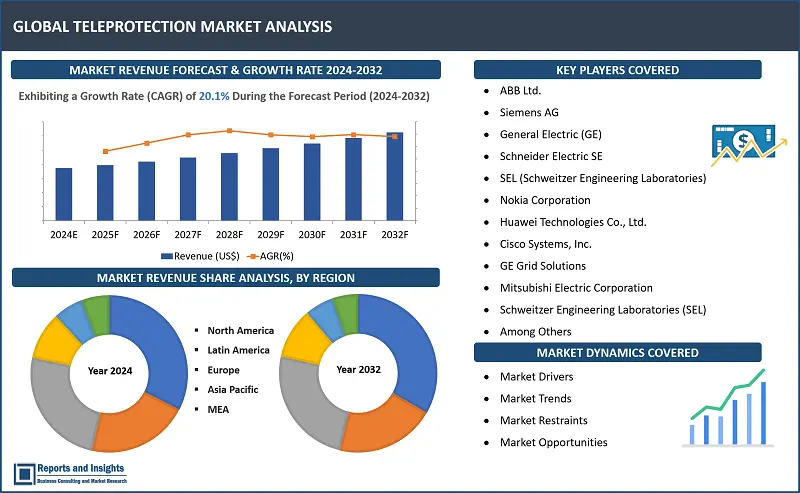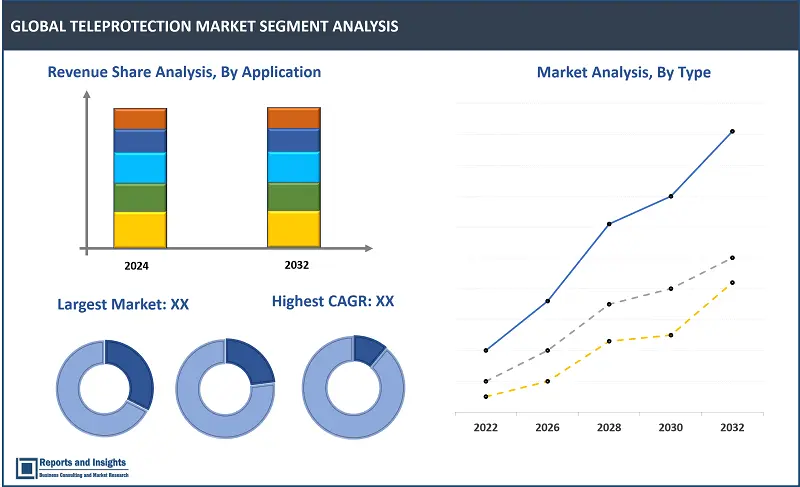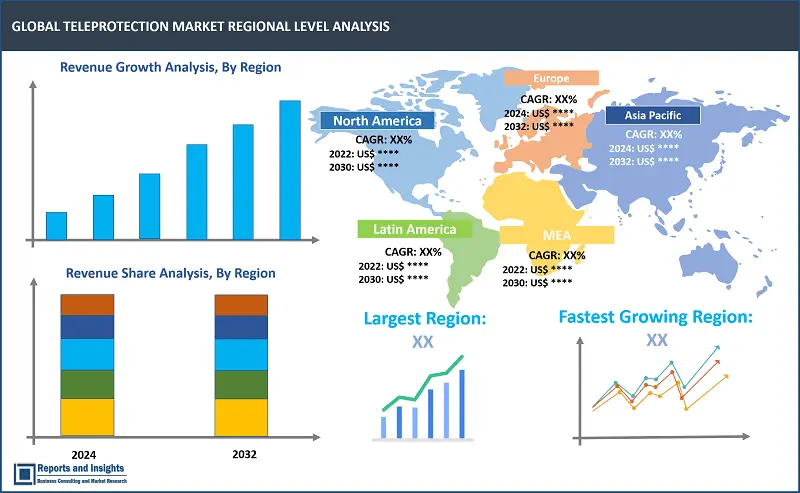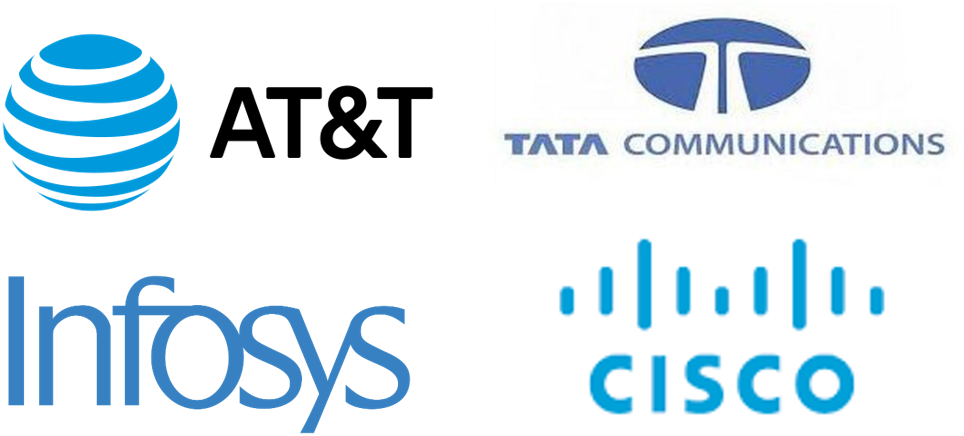Market Overview
"The teleprotection market size reached US$ 23.0 billion in 2023. Looking forward, Reports and Insights expects the market to reach US$ 119.6 billion by 2032, exhibiting a growth rate (CAGR) of 20.1% during 2024-2032."
|
Report Attributes |
Details |
|
Base Year |
2023 |
|
Forecast Years |
2024-2032 |
|
Historical Years |
2021-2023 |
|
Market Growth Rate (2024-2032) |
20.1% |
Teleprotection is a set of technologies and protocols used in the power utility sector to quickly detect and respond to faults in the electrical grid. It enables effective communication between protection devices spread across the grid, enabling the prompt isolation of faulty sections to prevent widespread disruptions and ensure grid stability. These systems utilize different communication methods like fiber optics, microwave links, and digital substations to transmit signals between protective relays and other grid elements, streamlining the coordination and automation of protective measures.
The teleprotection market is witnessing notable expansion due to rising demands for dependable and secure communication networks within the power utility sector. These systems play a vital role in ensuring the safety and effectiveness of power grid operations by enabling swift and precise fault detection and isolation. Additionally, the incorporation of advanced technologies like digital communication, IoT, and AI is augmenting the functionality of teleprotection systems, allowing utilities to enhance grid reliability and efficiency. Major industry players are actively developing innovative solutions to meet the changing needs of the power sector, propelling the market's growth on a global scale.

Teleprotection Market Trends and Drivers:
The teleprotection market is experiencing growth due to several key trends and drivers. A major factor is the increasing emphasis on grid reliability and efficiency, leading to greater adoption of teleprotection systems for faster fault detection and isolation. Integration of advanced technologies like IoT, AI, and digital communication is enhancing these systems' capabilities, allowing utilities to enhance grid performance. Additionally, investments in smart grid infrastructure and the rising demand for renewable energy sources are driving market growth, as teleprotection systems are crucial for managing the complexities of modern power grids
The teleprotection market growth is influenced by several factors which include increasing focus on modernizing grids and integrating renewable energy sources, which drives the need for reliable teleprotection systems to maintain grid stability. Additionally, the growing complexity of power systems and the rise in grid infrastructure projects globally contribute to the demand for teleprotection solutions. Furthermore, advancements in communication technologies, like the rollout of 5G networks, are enhancing the capabilities of teleprotection systems, further propelling market expansion.
Teleprotection Market Restraining Factors:
The teleprotection market encounters several factors that impede its growth. A primary challenge is the significant upfront investment needed for deploying teleprotection systems, which can discourage utilities, particularly in emerging markets, from embracing these solutions. Furthermore, compatibility issues between various teleprotection devices and protocols can create interoperability challenges, restricting the smooth integration of teleprotection systems into current grid setups. Additionally, worries about data security and privacy in teleprotection systems, especially as digital communication technologies become more prevalent, also hinder market expansion.
Teleprotection Market Opportunities:
The teleprotection market offers several avenues for expansion and advancement. A notable opportunity arises from the growing uptake of smart grid technologies, which necessitate sophisticated teleprotection systems for maintaining grid reliability and effectiveness. Integrating teleprotection with other smart grid elements like advanced metering infrastructure (AMI) and distribution automation (DA) can help utilities improve grid management and energy distribution efficiency. Furthermore, the increasing emphasis on cybersecurity in the energy industry creates a chance for teleprotection providers to develop solutions that address these issues and offer secure communication networks for power grids.
Teleprotection Market Segmentation:

By Type
- Teleprotection Unit
- Communication Network Technology
- Teleprotection Software
The type segment is further categorised into teleprotection unit, communication network technology, teleprotection software. Among these, communication network technology currently dominates among the sub-segments of the teleprotection market. This is largely attributed to the crucial function of communication networks in facilitating the effective operation of teleprotection systems. Technologies like fiber optics, microwave, and digital substations are vital for ensuring the swift and reliable transmission of signals between protection devices and other grid elements. As the teleprotection market expands, the demand for advanced communication network technologies is anticipated to persist, stimulating ongoing innovation and advancement in this particular sub-segment.
By Components
- Intelligent Electronic Device
- Interface Device
The components segment is further categorised into intelligent electronic device, and interface device. Among the components segments of the teleprotection market, intelligent electronic devices (IEDs) is currently dominating. IEDs play a crucial role in teleprotection systems by detecting and responding to faults in the power grid. Equipped with advanced communication capabilities, IEDs facilitate information exchange with other devices, enabling coordinated and swift responses to grid disturbances. In contrast, interface devices primarily serve as bridges between different communication protocols and may not be as prevalent in modern teleprotection systems. As the teleprotection market progresses, the demand for IEDs is expected to remain high, driven by the imperative for enhanced grid reliability and efficiency.
By Application
- Power
- Telecom
- Information Technology
- Oil & Gas Pipelines
- Transportation
- Others
The application segment is further categorised into power, telecom, information technology, oil and gas pipelines, transportation, and others. The power sector currently dominates among the applications of teleprotection systems. In the power industry, teleprotection plays a critical role in ensuring the reliable and secure operation of electrical grids. These systems are essential for quickly detecting and isolating faults, minimizing downtime, and ensuring uninterrupted electricity supply. The increasing focus on grid modernization and the integration of renewable energy sources are key drivers for the demand for teleprotection systems in the power sector. While telecommunication, information technology, oil & gas pipelines, transportation, and other sectors also benefit from teleprotection, the power industry remains the primary driver of market growth due to its critical need for grid reliability and efficiency.
By Region

North America
- United States
- Canada
Europe
- Germany
- United Kingdom
- France
- Italy
- Spain
- Russia
- Poland
- Benelux
- Nordic
- Rest of Europe
Asia Pacific
- China
- Japan
- India
- South Korea
- ASEAN
- Australia & New Zealand
- Rest of Asia Pacific
Latin America
- Brazil
- Mexico
- Argentina
Middle East & Africa
- Saudi Arabia
- South Africa
- United Arab Emirates
- Israel
- Rest of MEA
North America is currently the dominant region in the teleprotection market. This is primarily due to its early adoption of advanced grid technologies and stringent regulations aimed at ensuring grid reliability and security. The presence of key market players, substantial investments in grid modernization, and the increasing integration of renewable energy sources further contribute to North America's dominance in the teleprotection market. Additionally, Asia Pacific is also emerging as a promising market for teleprotection, driven by rapid industrialization, urbanization, and significant investments in smart grid infrastructure, particularly in countries like China and India.
Leading Teleprotection Providers & Competitive Landscape:
The teleprotection market is highly competitive, with several key players vying for market share and actively engaging in strategic initiatives. These companies focus on product innovation, technological advancements, and expanding their product portfolios to gain a competitive edge. These companies are continuously investing in research and development activities to enhance their product offerings and cater to the evolving needs of customers in terms of efficiency, performance, and sustainability.
These companies include:
- ABB Ltd.
- Siemens AG
- General Electric (GE)
- Schneider Electric SE
- SEL (Schweitzer Engineering Laboratories)
- Nokia Corporation
- Huawei Technologies Co., Ltd.
- Cisco Systems, Inc.
- GE Grid Solutions
- Mitsubishi Electric Corporation
- Schweitzer Engineering Laboratories (SEL)
- Eaton Corporation
- Toshiba Corporation
- Alstom Grid
- Schweitzer Engineering Laboratories (SEL)
- Telvent (Schneider Electric)
- Siemens Energy
- NR Electric Co., Ltd.
- Landis+Gyr
- S&C Electric Company
Recent News and Development
-
February 2024: Huawei has introduced the industry's first fgOTN-compliant optical transmission product, providing an intelligent foundation for the electric power and transportation sectors.
Teleprotection Market Research Scope
|
Report Metric |
Report Details |
|
Market size available for the years |
2021-2023 |
|
Base Year |
2023 |
|
Forecast Period |
2024-2032 |
|
Compound Annual Growth Rate (CAGR) |
20.1% |
|
Segment covered |
Type, component, application and regions. |
|
Regions Covered |
North America: The U.S. Canada Latin America: Brazil, Mexico, Argentina, & Rest of Latin America Asia Pacific: China, India, Japan, Australia & New Zealand, ASEAN, & Rest of Asia Pacific Europe: Germany, The U.K., France, Spain, Italy, Russia, Poland, BENELUX, NORDIC, & Rest of Europe The Middle East & Africa: Saudi Arabia, United Arab Emirates, South Africa, Egypt, Israel, and Rest of MEA |
|
Fastest Growing Country in Europe |
U.K. |
|
Largest Market |
North America |
|
Key Players |
ABB Ltd., Siemens AG, General Electric (GE), Schneider Electric SE, SEL (Schweitzer Engineering Laboratories), Nokia Corporation, Huawei Technologies Co., Ltd., Cisco Systems, Inc., GE Grid Solutions, Mitsubishi Electric Corporation, Schweitzer Engineering Laboratories (SEL), Eaton Corporation, Toshiba Corporation, Alstom Grid, Schweitzer Engineering Laboratories (SEL), Telvent (Schneider Electric), Siemens Energy, NR Electric Co., Ltd., Landis+Gyr, and S&C Electric Company. |
Frequently Asked Question
At what CAGR will the teleprotection market expand?
The market is anticipated to rise at 20.1% through 2032.
Which region accounted for the largest market share in 2023?
North America region accounted for the largest market share in 2023.
What are some key factors driving revenue growth of the teleprotection market?
The key factors driving revenue growth of the teleprotection market are technological advancements, growing demand for energy, focus on grid security, and rising renewable energy integration.
What are some major challenges faced by companies in the teleprotection market?
Companies face challenges such as latency, regulatory compliance, cost, and interoperability.
How is the competitive landscape in the teleprotection market?
The market is competitive, with key players focusing on technological advancements, product innovation, and strategic partnerships. Factors such as product quality, reliability, after-sales services, and customization capabilities play a significant role in determining competitiveness.
Who are the leading key players in teleprotection market?
The leading key players in the teleprotection market are ABB Ltd., Siemens AG, General Electric (GE), Schneider Electric SE, SEL (Schweitzer Engineering Laboratories), Nokia Corporation, Huawei Technologies Co., Ltd., Cisco Systems, Inc., GE Grid Solutions, Mitsubishi Electric Corporation, Schweitzer Engineering Laboratories (SEL), Eaton Corporation, Toshiba Corporation, Alstom Grid, Schweitzer Engineering Laboratories (SEL), Telvent (Schneider Electric), Siemens Energy, NR Electric Co., Ltd., Landis+Gyr, and S&C Electric Company.
What are the different communication technologies used in teleprotection systems?
Teleprotection systems have the flexibility to utilize different communication technologies, such as fiber optics, microwave links, power line carrier (PLC) communication, and radio communication. The selection of the appropriate technology is based on considerations such as distance, reliability, and cost.
How do teleprotection systems contribute to grid modernization?
Teleprotection systems are essential for modernizing grids as they improve the reliability and efficiency of power systems. They enable quicker detection and isolation of faults, leading to reduced downtime and enhanced overall system performance.

